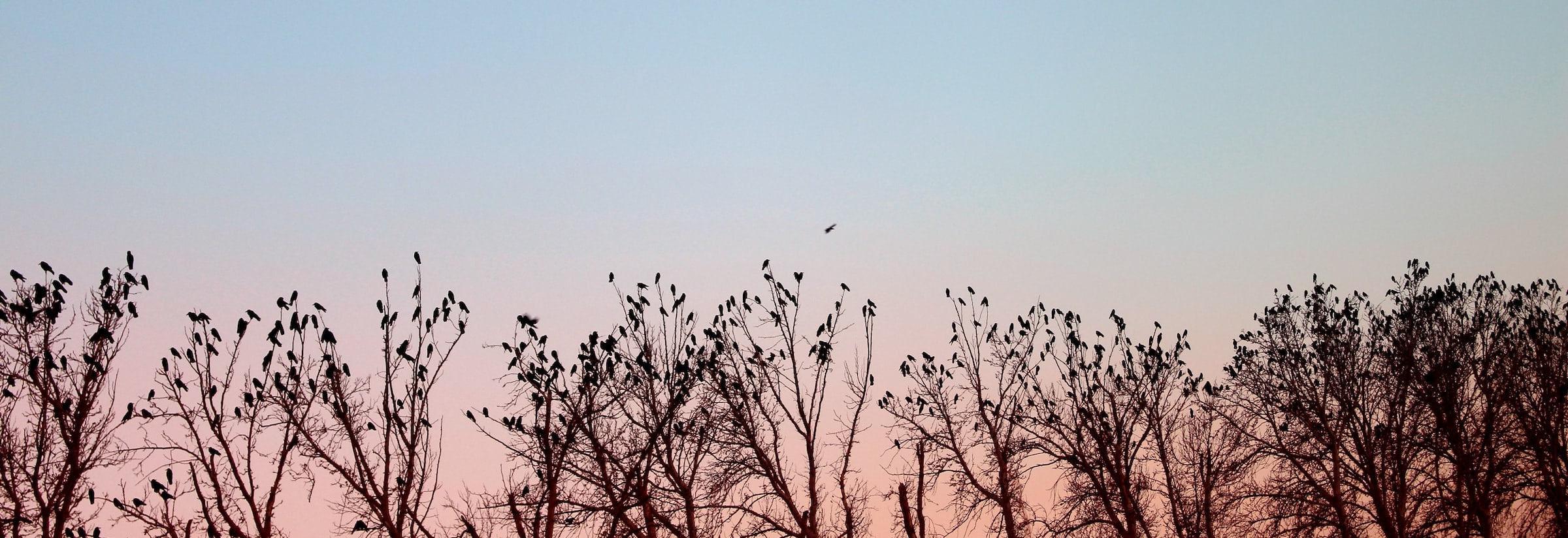Quaker Crows
1st of Sun's Swell, AE 721
While there is debate over whether quaker crows are truly evolving into their own species, most laymen believe them strange enough that they should be. The name, "quaker," comes from the fact that quaker crows are a small, specific population of corvids living in and around the ever-so-slowly rotting corpse of Reszket, the Lizdah era deity of natural disasters. Reszket was most commonly associated with earthquakes, hence "quaker."
Over the last six centuries, quaker crows have become visually different from other regional populations of corvids. The other local species of corvid is known as the cravat crow, named so because they are all black with the exception of a white ring around their neck, which extends slightly down their chest in a pattern many people compare to the shape of a cravat tie. By comparison, quaker crows have a similar white ring around their neck, although it is noticeably larger in that they are fully white from the neck up. Their primary and secondary flight feathers have also turned white.
Their nesting behavior has also changed. Cravat crows build their nests in trees and plaster them with mud to secure them. Quaker crows exclusively construct their nests within Reszket's corpse; while it has proven difficult to observe their nests closely, it does seem as though they still plaster them securely in place.
Basic Information
Genetics and Reproduction
Ornithologists still debate over whether to classify quaker crows as a potential subspecies or entirely new species; quaker crows still appear to rarely but occasionally interbreed with cravat crows and produce fertile offspring, but show a strong preference for their own kind.
Growth Rate & Stages
Females tend to lay small clutches of eggs, usually only two or three at a time, and she will incubate them for approximately three weeks, during which time her mate will supply her with food. Newly hatched birds will fledge for another three weeks before they will begin to leave the nest and find their own food.
Dietary Needs and Habits
Other than a specific preference for the carrion left behind by Reszket, quaker crows seem to behave similarly to your average corvid, eating in the same quantities at the same frequency.
Lifespan
10 years
Conservation Status
Quaker crows have a relatively small but stable and slowly growing population; they're believed to number around 500. Given that they've monopolized a rather abundant food source, it's unclear why the population hasn't grown much larger.
Average Weight
1lb
Average Length
55cm for males, 50cm for females
Comparable to other corvids; capable of facial recognition, limited tool use, and seem to be able to count in small quantities




I will help you out with the conundrum of whether is this a different species, sub-species, or same species argument going on. and then on the article basically proves both sides of the argument at this same time not giving it a definite result. Very well written article
Hi, and thank you! I took some classes in college on evolutionary biology and had remembered reading about all the different ways that people have tried to draw the line between species/sub-species and that every single time we've tried, there's always been something that messed it up. It made me realize that the most scientifically accurate answer was to simply let scientists argue about it haha